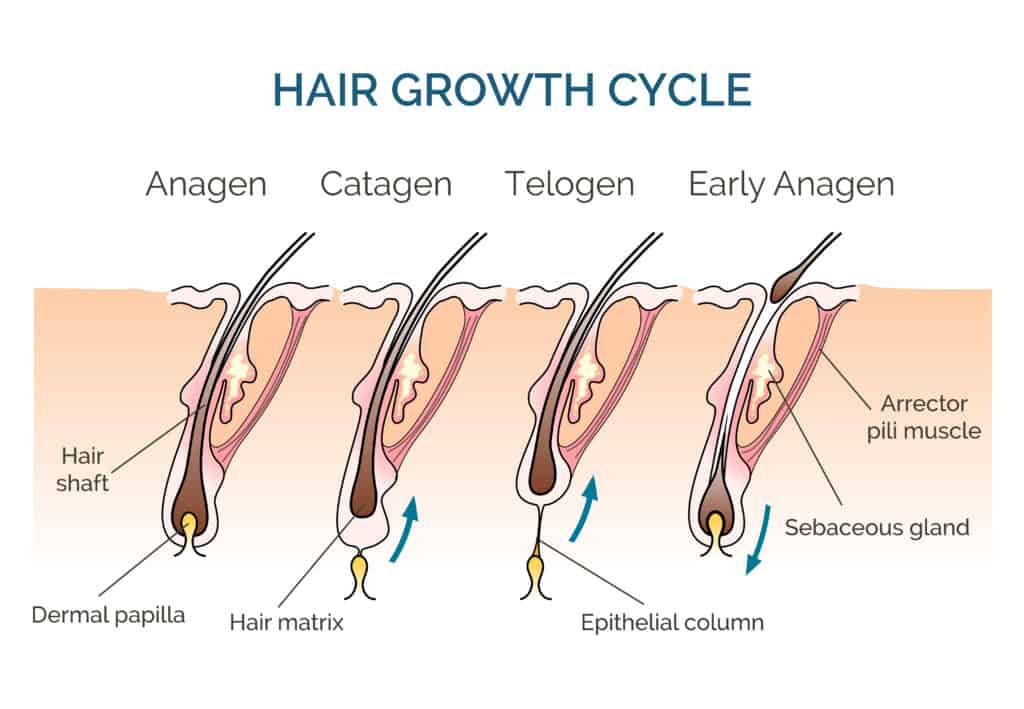
Looking at how the hair grows and sheds normally is important, as many hair loss issues are related to the hair cycle.
The hair grows in a cycle of 3 main phases:
- Anagen (growing – 2-6 years)
- Catagen (transitional – 2 weeks)
- Telogen (resting/shedding – 3-4 months)
Each hair grows independently to the next, with about 80-90% of hair growing, and 10% in the telogen phase at any given time. That equates to a normal scalp shedding about 100 hairs a day!
HAIR LOSS CONDITIONS
Androgenetic Alopecia
More commonly known as Female/Male Patterned Hair Loss.
This is one of the most common types of hair loss affecting women, and certainly the most common in men.
Androgenetic alopecia affects the top region of the scalp. Women with FPHL will often notice a more visible scalp over the central parting. MPHL tends to start with a more noticeable recession area, before progressing to the top, frontal, and crown areas.
Androgenetic alopecia is a genetically predisposed condition (from one or both parents) involving androgens (male hormones). The affected hair follicles become progressively thinner (miniaturised) and grow for a shorter length of time with each passing cycle.
In women the mechanisms involved are more complex than the male form, and the condition is often exacerbated by other underlying factors.
Telogen Effluvium
This is a condition of the hair cycle, associated with accelerated shedding of hair beyond what would otherwise be considered normal.
Some factors can cause Anagen hairs to prematurely enter the Telogen phase, leading to an increase of hair leaving the scalp. These factors can include low iron/iron deficiency, low vitamin B12, poor/insufficient diets, crash dieting, medication, illness (particularly with high fever), significant emotional stressors, thyroid issues, hormonal imbalance (post pregnancy/menopause), and many other issues.
Telogen effluvium can be resolved in the vast majority of cases. Identifying the cause is key to gaining the correct treatment, so an in-depth consultation and accurate diagnosis is essential.
Alopecia Areata
This is a non-scaring condition, which presents as smooth patches of hair loss. The condition affects both men and women equally, with 60% of sufferers experiencing initial onset before the age of 20.
Alopecia Areata is most commonly seen on the scalp, but the condition can affect any hair bearing area of the body. Sometimes the patches of hair loss can converge affecting a larger area.
Alopecia Areata is caused by a malfunction of the immune system (auto-immune), where healthy tissue (in this case hair follicles) are mistakenly attacked by the cells of the immune system, causing inflammation and subsequent loss of hair. Inflammation only affects the base of the hair follicle and does not interfere with stem cell production, so potential for hair growth remains.
Alopecia Areata is an unpredictable condition, with many people seeing spontaneous regrowth without treatment.
Other forms of this condition are Alopecia Totalis (total loss of scalp hair),and Alopecia Universalis (total loss of body hair), although these are much more rare.
Cicatricial Alopecia’s
This group of hair loss conditions unfortunately involves the permanent loss of hair over a specific area of the scalp. Some of these conditions can also affect the eyebrows, eyelashes, and other hair bearing areas of the body. There are many types of cicatricial alopecia including:
- Lichen Planopilaris (LPP)
- Frontal Fibrosing Alopecia (considered a variant of LPP)
- Graham Little syndrome (considered a variant of LPP)
- Pseudopelard of Brocq
- Discoid Lupus Erythematosus
- Central centrifugal Cicatricial Alopecia
- Folliculitis Decalvans
- Dissecting Cellulitis
There are other scaring alopecia’s not listed here however, the one’s above relate to the most commonly seen conditions. It must be noted that most cicatricial alopecia’s on the whole are quite rare, compared with other hair loss types.
Some forms of cicatricial alopecia are caused by an auto-immune reaction, where the immune system mistakenly attacks the hair follicles. This process also destroys the region of the follicle which produces stem cells, preventing future hair growth.
Some forms are the result of secondary/external factors.
Correct diagnosis and referral for prompt treatment of scaring hair loss is required, so progression of hair loss can be prevented and symptoms are managed.
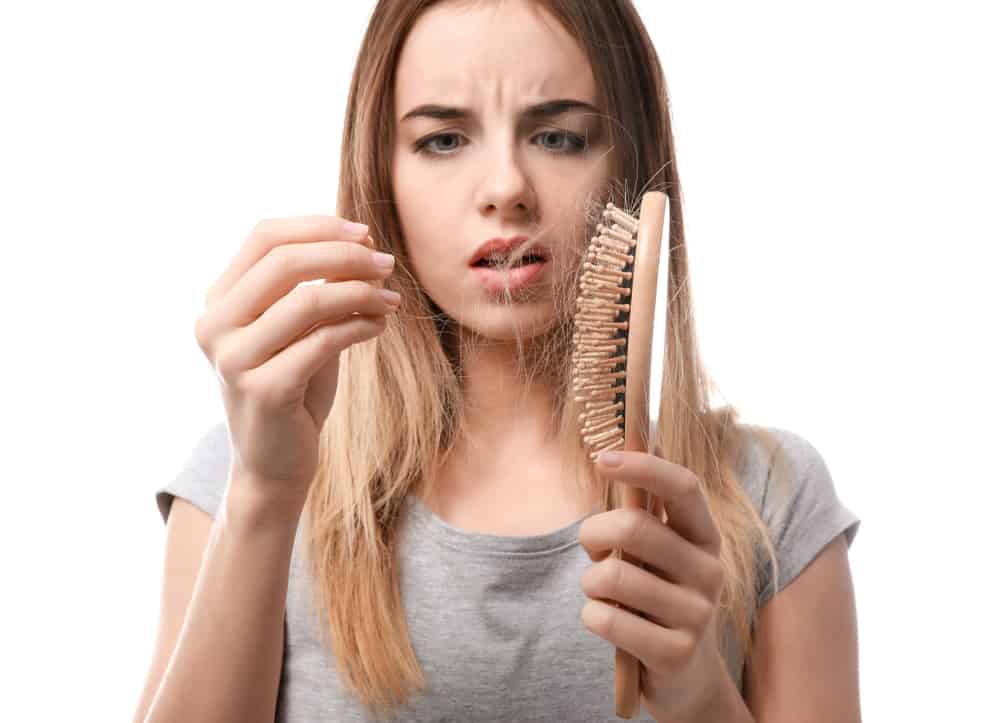
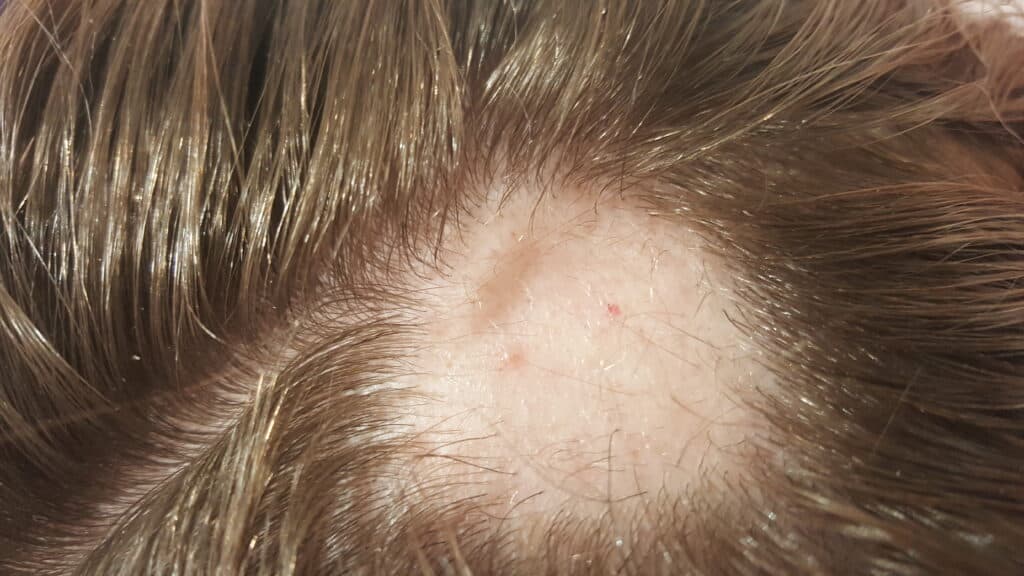
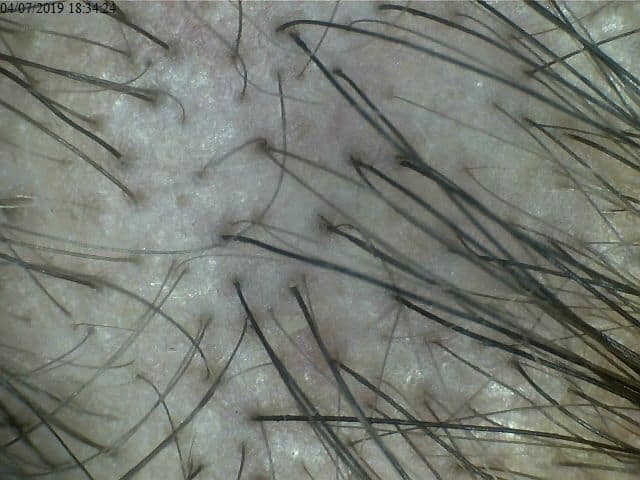
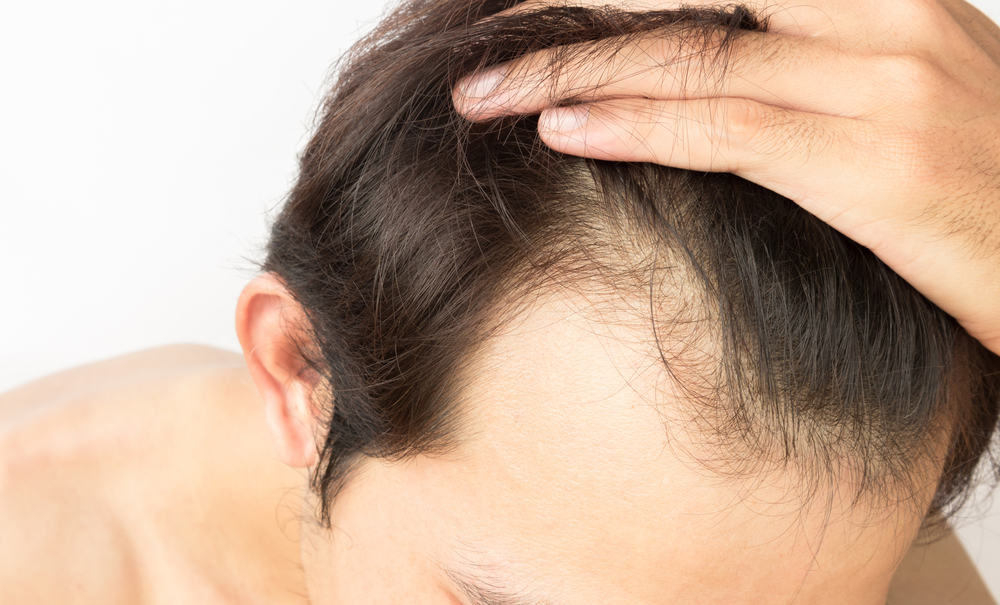
SCALP CONDITIONS
Dandruff
Also known as pityriasis simplex capitis. The dreaded itchy, flaky scalp is a very common and irritating issue which most of us are likely to experience at some point in our lives. An imbalance in the scalps natural microbiome (in particular Malassezia yeasts), irritates the scalp causing the build up of visible scale.
Seborrheic Dermatitis
This is a chronic inflammatory condition of the scalp, causing an itchy and yellow flaky appearance. Often mistaken for a dry scalp, seborrheic dermatitis is actually an oily condition. An increase in sebum production encourages the proliferation of lipid loving Malaseszia species which otherwise live naturally on the scalp. This causes the immune system to respond, initiating an inflammatory response and subsequent scaling.
Psoriasis
Skin cells (keratinocytes) are produced and reach the epidermal surface over a 25-30 day period. In those affected by psoriasis, this process speeds up drastically to as little as 4 days in some cases. This leads to inflammation and an excessive build up of skin cells known as plaques.
This can be a frustrating and uncomfortable condition for most, which often flares up at times of stress, illness, or with certain foods.
There is currently no cure for psoriasis, however it is possible to manage psoriasis successfully with a combination of appropriate medications and lifestyle adjustments.



